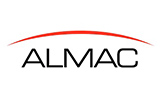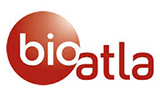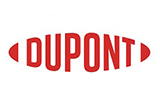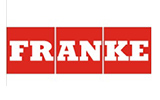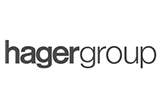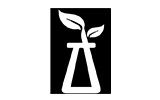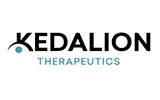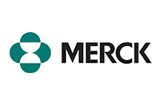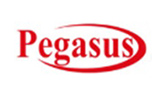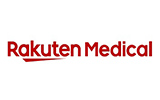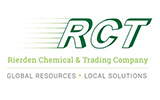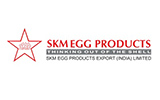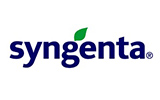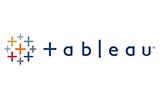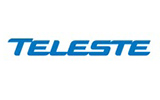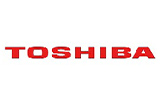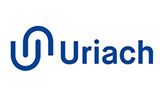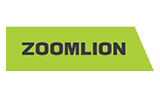CHAPTER 1:INTRODUCTION
1.1.Report description
1.2.Key benefits for stakeholders
1.3.Key market segments
1.4.Research methodology
1.4.1.Primary research
1.4.2.Secondary research
1.4.3.Analyst tools and models
CHAPTER 2:EXECUTIVE SUMMARY
2.1.CXO perspective
CHAPTER 3:MARKET LANDSCAPE
3.1.Market definition and scope
3.2.Key findings
3.2.1.Top investment pockets
3.3.Porter's five forces analysis
3.3.1.Bargaining power of suppliers
3.3.2.Threat of new entrants
3.3.3.Threat of substitutes
3.3.4.Competitive rivalry
3.3.5.Bargaining power among buyers
3.4.Market dynamics
3.4.1.Drivers
3.4.1.1.Rise in the demand for sustainable energy source
3.4.1.2.Easy availability of renewable methanol
3.4.1.3.Stringent government regulation
3.4.2.Restraint
3.4.2.1.High installation cost
3.4.3.Opportunities
3.4.3.1.Substitution of heave marine fuels with renewable methanol
3.5.Regulatory Framework
3.6.Patent analysis
3.6.1.By Region (2012-2019)
3.7.Value Chain Analysis
CHAPTER 4:GLOBAL RENEWABLE METHANOL MARKET, BY FEEDSTOCK
4.1.Overview
4.1.1.Market size and forecast
4.2.Agricultural Waste
4.2.1.Key market trends, growth factors, and opportunities
4.2.2.Market size and forecast, by Region
4.3.Forestry Residues
4.3.1.Key market trends, growth factors, and opportunities
4.3.2.Market size and forecast, by Region
4.4.Municipal Solid Waste
4.4.1.Key market trends, growth factors, and opportunities
4.4.2.Market size and forecast, by Region
4.5.CO2 Emission
4.5.1.Key market trends, growth factors, and opportunities
4.5.2.Market size and forecast, by Region
4.6.Others
4.6.1.Key market trends, growth factors, and opportunities
4.6.2.Market size and forecast, by Region
CHAPTER 5:EUROPE RENEWABLE METHANOL MARKET, BY APPLICATION
5.1.Overview
5.1.1.Market size and forecast
5.2.Formaldehyde
5.2.1.Key market trends, growth factors, and opportunities
5.2.2.Market size and forecast, by Region
5.3.Dimethyl Ether (DME, also known as Methoxymethane) and Methyl tert-Butyl Ether (MTBE)
5.3.1.Key market trends, growth factors, and opportunities
5.3.2.Market size and forecast, by Region
5.4.Gasoline
5.4.1.Key market trends, growth factors, and opportunities
5.4.2.Market size and forecast, by Region
5.5.Solvent
5.5.1.Key market trends, growth factors, and opportunities
5.5.2.Market size and forecast, by Region
5.6.Others
5.6.1.Key market trends, growth factors, and opportunities
5.6.2.Market size and forecast, by Region
CHAPTER 6:EUROPE RENEWABLE METHANOL MARKET, BY END-USER INDUSTRY
6.1.Overview
6.1.1.Market size and forecast
6.2.Chemical
6.2.1.Key market trends, growth factors, and opportunities
6.2.2.Market size and forecast, by Region
6.3.Transportation
6.3.1.Key market trends, growth factors, and opportunities
6.3.2.Market size and forecast, by Region
6.4.Power generation
6.4.1.Key market trends, growth factors, and opportunities
6.4.2.Market size and forecast, by Region
6.5.Others
6.5.1.Key market trends, growth factors, and opportunities
6.5.2.Market size and forecast, by Region
CHAPTER 7:RENEWABLE METHANOL MARKET, BY REGION
7.1.Overview
7.2.North America
7.2.1.Key market trends, growth factors, and opportunities
7.2.2.Market size and forecast, by feedstock
7.2.3.Market size and forecast, by application
7.2.4.Market size and forecast, by end-user industry
7.2.5.Market share analysis, by Region
7.2.6.U.S.
7.2.6.1.Market size and forecast, by Feedstock
7.2.6.2.Market size and forecast, by application
7.2.6.3.Market size and forecast, by end-user industry
7.2.7.CANADA
7.2.7.1.Market size and forecast, by Feedstock
7.2.7.2.Market size and forecast, by application
7.2.7.3.Market size and forecast, by end-user industry
7.2.8.MEXICO
7.2.8.1.Market size and forecast, by Feedstock
7.2.8.2.Market size and forecast, by application
7.2.8.3.Market size and forecast, by end-user industry
7.3.Europe
7.3.1.Key market trends, growth factors, and opportunities
7.3.2.Market size and forecast, by feedstock
7.3.3.Market size and forecast, by application
7.3.4.Market size and forecast, by end-user industry
7.3.5.Market share analysis, by Region
7.3.6.Germany
7.3.6.1.Market size and forecast, by Feedstock
7.3.6.2.Market size and forecast, by application
7.3.6.3.Market size and forecast, by end-user industry
7.3.7.UK
7.3.7.1.Market size and forecast, by Feedstock
7.3.7.2.Market size and forecast, by application
7.3.7.3.Market size and forecast, by end-user industry
7.3.8.Sweden
7.3.8.1.Market size and forecast, by feedstock
7.3.8.2.Market size and forecast, by application
7.3.8.3.Market size and forecast, by end-user industry
7.3.9.Denmark
7.3.9.1.Market size and forecast, by feedstock
7.3.9.2.Market size and forecast, by application
7.3.9.3.Market size and forecast, by end-user industry
7.3.10.France
7.3.10.1.Market size and forecast, by feedstock
7.3.10.2.Market size and forecast, by application
7.3.10.3.Market size and forecast, by end-user industry
7.3.11.Italy
7.3.11.1.Market size and forecast, by feedstock
7.3.11.2.Market size and forecast, by application
7.3.11.3.Market size and forecast, by end-user industry
7.3.12.Spain
7.3.12.1.Market size and forecast, by feedstock
7.3.12.2.Market size and forecast, by application
7.3.12.3.Market size and forecast, by end-user industry
7.3.13.Rest of Europe
7.3.13.1.Market size and forecast, by feedstock
7.3.13.2.Market size and forecast, by application
7.3.13.3.Market size and forecast, by end-user industry
7.4.Asia-Pacific
7.4.1.Key market trends, growth factors, and opportunities
7.4.2.Market size and forecast, by feedstock
7.4.3.Market size and forecast, by application
7.4.4.Market size and forecast, by end-user industry
7.4.5.Market share analysis, by Region
7.4.6.CHINA
7.4.6.1.Market size and forecast, by Feedstock
7.4.6.2.Market size and forecast, by application
7.4.6.3.Market size and forecast, by end-user industry
7.4.7.JAPAN
7.4.7.1.Market size and forecast, by Feedstock
7.4.7.2.Market size and forecast, by application
7.4.7.3.Market size and forecast, by end-user industry
7.4.8.INDIA
7.4.8.1.Market size and forecast, by Feedstock
7.4.8.2.Market size and forecast, by application
7.4.8.3.Market size and forecast, by end-user industry
7.4.9.AUSTRALIA
7.4.9.1.Market size and forecast, by Feedstock
7.4.9.2.Market size and forecast, by application
7.4.9.3.Market size and forecast, by end-user industry
7.4.10.SOUTH KOREA
7.4.10.1.Market size and forecast, by Feedstock
7.4.10.2.Market size and forecast, by application
7.4.10.3.Market size and forecast, by end-user industry
7.4.11.REST OF ASIA-PACIFIC
7.4.11.1.Market size and forecast, by Feedstock
7.4.11.2.Market size and forecast, by application
7.4.11.3.Market size and forecast, by end-user industry
7.5.LAMEA
7.5.1.Key market trends, growth factors, and opportunities
7.5.2.Market size and forecast, by feedstock
7.5.3.Market size and forecast, by application
7.5.4.Market size and forecast, by end-user industry
7.5.5.Market share analysis, by Region
7.5.6.BRAZIL
7.5.6.1.Market size and forecast, by Feedstock
7.5.6.2.Market size and forecast, by application
7.5.6.3.Market size and forecast, by end-user industry
7.5.7.SAUDI ARABIA
7.5.7.1.Market size and forecast, by Feedstock
7.5.7.2.Market size and forecast, by application
7.5.7.3.Market size and forecast, by end-user industry
7.5.8.SOUTH AFRICA
7.5.8.1.Market size and forecast, by Feedstock
7.5.8.2.Market size and forecast, by application
7.5.8.3.Market size and forecast, by end-user industry
7.5.9.REST OF LAMEA
7.5.9.1.Market size and forecast, by Feedstock
7.5.9.2.Market size and forecast, by application
7.5.9.3.Market size and forecast, by end-user industry
CHAPTER 8:COMPETITIVE LANDSCAPE
8.1.Introduction
8.2.Product mapping of top 10 players
8.3.Competitive heatmap
8.4.Key development
8.4.1.Agreement
8.4.2.Business Expansion
CHAPTER 9:COMPANY PROFILES
9.1.ADVANCED CHEMICAL TECHNOLOGIES
9.1.1.Company overview
9.1.2.Company snapshot
9.1.3.Operating business segments
9.1.4.Product portfolio
9.1.5.Business performance
9.1.6.Key strategic moves and developments
9.2.BASF SE
9.2.1.Company overview
9.2.2.Company snapshot
9.2.3.Operating business segments
9.2.4.Product portfolio
9.2.5.Business performance
9.2.6.Key strategic moves and developments
9.3.CARBON RECYCLING INTERNATIONAL (CRI)
9.3.1.Company overview
9.3.2.Company snapshot
9.3.3.Operating business segments
9.3.4.Product Portfolio
9.3.5.Key strategic moves and developments
9.4.ENERKEM
9.4.1.Company overview
9.4.2.Company snapshot
9.4.3.Operating business segments
9.4.4.Product Portfolio
9.4.5.Key strategic moves and developments
9.5.FRAUNHOFER
9.5.1.Company overview
9.5.2.Company snapshot
9.5.3.Operating business segments
9.5.4.Product portfolio
9.5.5.Business performance
9.6.INNOGY
9.6.1.Company overview
9.6.2.Company snapshot
9.6.3.Operating business segments
9.6.4.Product Portfolio
9.6.5.Business performance
9.7.NORDIC GREEN
9.7.1.Company overview
9.7.2.Company snapshot
9.7.3.Operating business segments
9.7.4.Product Portfolio
9.8.OCI N.V.
9.8.1.Company overview
9.8.2.Company snapshot
9.8.3.Operating business segments
9.8.4.Product Portfolio
9.8.5.Business performance
9.8.6.Key strategic moves and developments
9.9.SERENERGY A/S
9.9.1.Company overview
9.9.2.Company snapshot
9.9.3.Operating business segments
9.9.4.Product Portfolio
9.10.SODRA
9.10.1.Company overview
9.10.2.Company snapshot
9.10.3.Operating business segments
9.10.4.Product portfolio
9.10.5.Business performance


